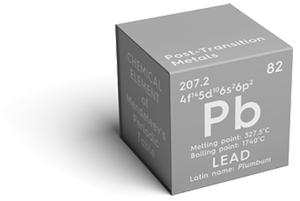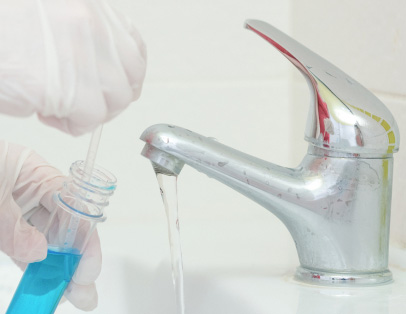 Lead in Drinking Water
Lead in Drinking Water
Bluestem Utilities Utilities regularly tests all its drinking water systems for a wide range of physical, microbiological, and chemical contaminants. It’s one of our key responsibilities to ensure your water is safe and reliable.
We take lead testing seriously as its health impacts are serious. Fortunately, we know a lot about lead contamination — how to identify it and how to reduce or eliminate its risks.
Water utilities can pinpoint and eliminate sources of lead in their systems, but a utility’s ability to test for lead stops at the homeowner’s property line, and drinking water may still be contaminated by plumbing pipes and fixtures in the home.
Alberta Environment and Parks Lead Management Program
In March 2019, Health Canada set new Canadian Drinking Water Quality Lead Guidelines. In the new Guidelines, the maximum acceptable concentration (MAC) for lead was lowered to 5 μg/L, and the point of compliance is now the consumer’s tap — not just the utility’s distribution system. So, lead testing will require the publics’ help to detect possible contamination within the household.
In response, the Alberta Government has implemented a new Lead Management Program, based on increased testing of all drinking water systems in the province, and voluntary testing of residential (at the tap) water quality. The Program’s goal is to detect and eliminate all sources of lead contamination.
Volunteer to Have Your Water Tested
 Residential drinking water lead testing is entirely voluntary. And while we appreciate it may be a small inconvenience, it’s an opportunity for residents to have their water tested free of charge and obtain peace of mind their water is free of lead contamination.
Residential drinking water lead testing is entirely voluntary. And while we appreciate it may be a small inconvenience, it’s an opportunity for residents to have their water tested free of charge and obtain peace of mind their water is free of lead contamination.
Testing entails a scheduled home visit by a Bluestem Utilities operations technician. Samples will be taken from a kitchen or bathroom tap, and the visit will take no more than 5 minutes. Homeowners will receive test results within two weeks.
Every year, Bluestem Utilities will obtain random samples from throughout the community. Bluestem Utilities’ operations team will reach out to residents for volunteers, but if you know you would like to participate, please contact Customer Care.
As this testing will necessarily identify individual addresses, consent is required for testing to proceed and for the results to be shared with the provincial regulator. Our visiting technician will require a simple Consent Form to be completed before samples are taken.
COVID-19 Protocols
Our technicians will be equipped with proper personal protective equipment, observe physical distancing, and sanitize all surfaces they touch during their visit.
General Information About Lead
Lead and Human Health
Lead is a naturally occurring element in our environment, but the human body has difficulty ridding itself of lead and it accumulates over time. Even minute amounts can pose a significant risk to human health. Lead poisoning can cause permanent damage to the brain, with children and pregnant women particularly at risk, as foetuses and children absorb lead more easily and the developing brain is more vulnerable. In adults, lead can affect red blood cell production and cause kidney damage.
Lead in Drinking Water
We’ve known about lead toxicity for centuries, but it was only at the end of the last century that a concerted effort to reduce and eliminate lead in the environment began. As such, lead poisoning in the home can usually be traced to older paints, pottery, food utensils, and plumbing.
Older household plumbing (pre-1990s) often contains lead in lead service lines “LSL” (the pipe from the utility’s watermain to your home), lead solders, and fixtures (particularly those made of brass). As these components age and corrode, greater amounts of lead leach into the water, particularly when water is left standing in pipes for longer periods.
In North America, the use of lead in household plumbing has been steadily reduced or eliminated since the late 1980s. As such, homes built or renovated after this time have a lower likelihood of lead contamination, however; the only way to be entirely sure is with proper testing.
Further Resources